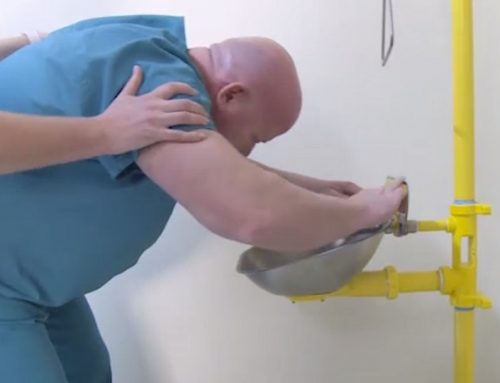Introduction
Workplace hand and finger injuries are common but preventable. This article provides an overview of how to protect your hands while working, based on an online workplace training course. We’ll cover hand anatomy, injury causes, safe work practices, proper tool usage, and recommended gloves. Follow these tips to keep your hands safe and injury-free.
The Complex and Delicate Nature of Hands
Our hands allow us to perform countless tasks due to their specialized design. The 27 bones of the hand and wrist provide structure while surrounding muscles, tendons and ligaments enable movement and strength. Nerves not only transmit sensation but also control the muscles. This intricate system is fed by blood vessels and covered by skin.
While remarkably capable, our hands are also delicate. The tissues are close to the surface, the bones are small, and the joints complex. It’s easy to forget this vulnerability while using our hands constantly at work and home. Even small stresses can cause long-term damage.
Causes of Hand Injuries
Hand injuries generally fall into two categories: acute and cumulative. Acute injuries occur suddenly from impacts, cuts, punctures, or equipment. Examples include smashed fingers from a hammer or severed digits in machinery. Cumulative injuries build up over time from repeated stress. Conditions like carpal tunnel syndrome or tendinitis arise from excess strain.
Some specific causes of hand injuries:
- Bruising or breaking from impacts. Hitting your hand with a hammer can damage skin, nerves, tendons, and bone.
- Cuts, scrapes, and punctures from sharp tools or materials with rough/splintery surfaces. These can sever blood vessels and nerves.
- Crushing, grabbing, or amputation from powered equipment. Machinery can easily entrap hands and fingers, resulting in traumatic injuries.
- Repetitive motions. Repeating the same hand/finger movements constantly creates excess strain on muscles and tendons.
- Awkward positions. Working with bent wrists or other non-neutral postures strains connective tissues.
- Excessive force. Manually or with tools, overexertion tears muscles and tendons over time.
- Vibration. Long-term use of high-vibration tools like jackhammers damages nerves and circulation.
Safe Work Practices
The best way to avoid hand injuries is implementing safe work practices that minimize hazards through the following:
- Proper mindset. Stay focused on your task, avoid distractions, and address any frustration before beginning work. Rushed or angry workers are more prone to mistakes.
- Hazard identification. Look for any potential dangers in your work area and address them. Ensure adequate lighting, tidy clutter, secure extension cords, etc.
- Tool knowledge. Understand fully how to operate tools and machinery you use. Review manuals and get training if unsure.
- Equipment inspections. Check hand and power tools for damage and wear before use. Dull cutting instruments require more unsafe force.
- Pace yourself. Working hurriedly leads to mistakes and injuries. Keeping an even pace allows you to track hand positioning.
- Posture. Avoid awkward wrist angles by standing or sitting as needed. Reposition work materials for better alignment.
- Task variation. Take mini-breaks periodically from repetitive tasks by inserting other duties. This provides muscle rest.
Proper Tool Usage
Selecting appropriate tools and using proper techniques prevents hand strains and injuries:
- Tool handles should be longer than your hand’s widest part to prevent excess palm pressure.
- Handles should fit comfortably in your grip with thumbs overlapping fingertips.
- Cushioned, padded, or textured handles reduce hand fatigue and improve control.
- Tool handles should allow neutral wrist postures, avoiding bending which pinches nerves.
- Adjust your grip to use larger muscle groups. Pinching fingers together applies unhealthy pressure.
- Let sharp instruments do the cutting rather than forcing them through materials manually.
- Monitor your hands for tingling or discomfort, indicating the start of damage from strain.
- Limit time using high vibration tools which can gradually harm nerves and circulation.
The Wrist – An Ergonomic Weak Spot
The wrist is especially vulnerable to ergonomic injury as numerous muscles, tendons, ligaments, nerves and blood vessels pass through it on the way to the hand. Even mild but repeated wrist strain can damage these tissues resulting in disabling conditions like carpal tunnel syndrome. Avoid awkward bending of the wrists when possible.
Power Grips vs Precision Grips
- Power grip: Curling fingers, palm and thumb around an object. Safely distributes weight and force across the entire hand. Appropriate for heavy or forceful tasks.
- Precision grip: Bringing thumb, index and middle fingers together. Allows fine control but applies excessive pressure when handling heavy items. Only use for light tasks requiring dexterity.
Excessive Force
Avoid exerting excessive manual force or grip pressure which strains muscles and tendons. Let tools do the work rather than forcing them. Overpowering stuck objects by hand can cause injury. If a task requires too much effort, stop and find a safer approach.
Recommended Gloves
Different glove types provide protection from various common hand hazards:
- Cloth – Safeguards against dirt, blisters, scratches and irritants like poison ivy.
- Leather – Offers puncture protection and durability for rough surfaces. Insulates from heat.
- Metal mesh/cut-resistant – Prevents lacerations from sharp tools and materials.
- Heat-resistant – Protects from high temperatures using materials like aluminized fabric.
- Chemical-resistant – Defends against corrosives like solvents, oils, and cleaners using vinyl, rubber or neoprene.
- Disposable – Shields against germs and contaminants like latex, nitrile, or polyethylene gloves.
Ensure gloves properly fit your hands. Pair them to the specific hazards you face. Inspect them before use and replace damaged gloves immediately. Wearing appropriate hand protection prevents injuries on the job.
Conclusion
Your hands accomplish incredible feats daily, but their intricate construction also makes them vulnerable. By following safe practices, choosing proper tools, and wearing suitable gloves, you can prevent painful and debilitating hand and finger injuries. Work smart, pay attention, and implement these tips to keep your hands healthy and capable throughout your career.
Your hands are not just tools; they’re a vital part of you that interacts with the world. By working smart and attentively, you can preserve their health and functionality throughout your career. However, it’s also crucial to have a structured and comprehensive approach to hand, wrist, and finger safety. Reading articles like this one provides excellent insights, but what if you could take your team’s safety knowledge to the next level?
Imagine a resource that doesn’t just tell, but shows your employees how to protect their hands through real-world examples, in-depth modules, and interactive exercises. A resource that is designed to cover every aspect of hand safety from anatomy to ergonomic best practices, in a way that sticks. With this in mind, we’re excited to introduce you to our full-length interactive courses, specifically tailored to offer an unrivaled, in-depth understanding of hand, wrist, and finger safety.
👋 Unlock Your Team’s Full Potential with Unbeatable Hand, Wrist, and Finger Safety—Because Your Hands Aren’t Just Tools, They’re Your Future!
🔥 Are You Aware of the Unseen Threat Looming Over Your Workplace Every Day?
You know the story. Your employees are your greatest asset, but what about their most valuable tools—their hands? Every push, pull, and lift is a testament to their hard work, but it also exposes them to hazards that can not only harm them but can also cause setbacks in productivity and increase costs through medical claims.
✅ Why Our Full-Length Interactive Courses Are The Solution You Didn’t Know You Needed
We’re not just offering information; we’re providing a comprehensive solution that will revolutionize your team’s safety protocols. Here’s what sets our courses apart:
- In-Depth Understanding: Unlike micro-courses that just skim the surface, our full-length interactive courses delve into the complexities of hand, wrist, and finger safety.
- Real-World Applications: Our courses are chock-full of case studies, examples, and actionable advice that employees can apply immediately, ensuring not just theoretical knowledge but practical skills.
- Dual Language Availability: Reaching out to a diverse workforce? Our courses are available in both English and Spanish, ensuring no one is left behind.
📘 Course Highlights
- Master the intricacies of the hand’s design and structure so you understand why it’s vulnerable and how to protect it.
- Implement safe work practices that make safety second nature, not an afterthought.
- Learn about preventing ergonomic injuries that can be debilitating in the long run.
- Gain insights into choosing tools and using them safely, ensuring maximum efficiency with minimum risk.
- Discover the secret to selecting the best gloves for the job, personalized for the task at hand.
🚀 Elevate Your Workplace Safety to Unprecedented Levels
Don’t leave your team’s safety—and your bottom line—to chance. Invest in our full-length interactive courses and arm your employees with the knowledge they need to work safer, smarter, and more productively.
Unlock the Future of Safety. Enroll Now!
For a free demonstration click on the link below:










